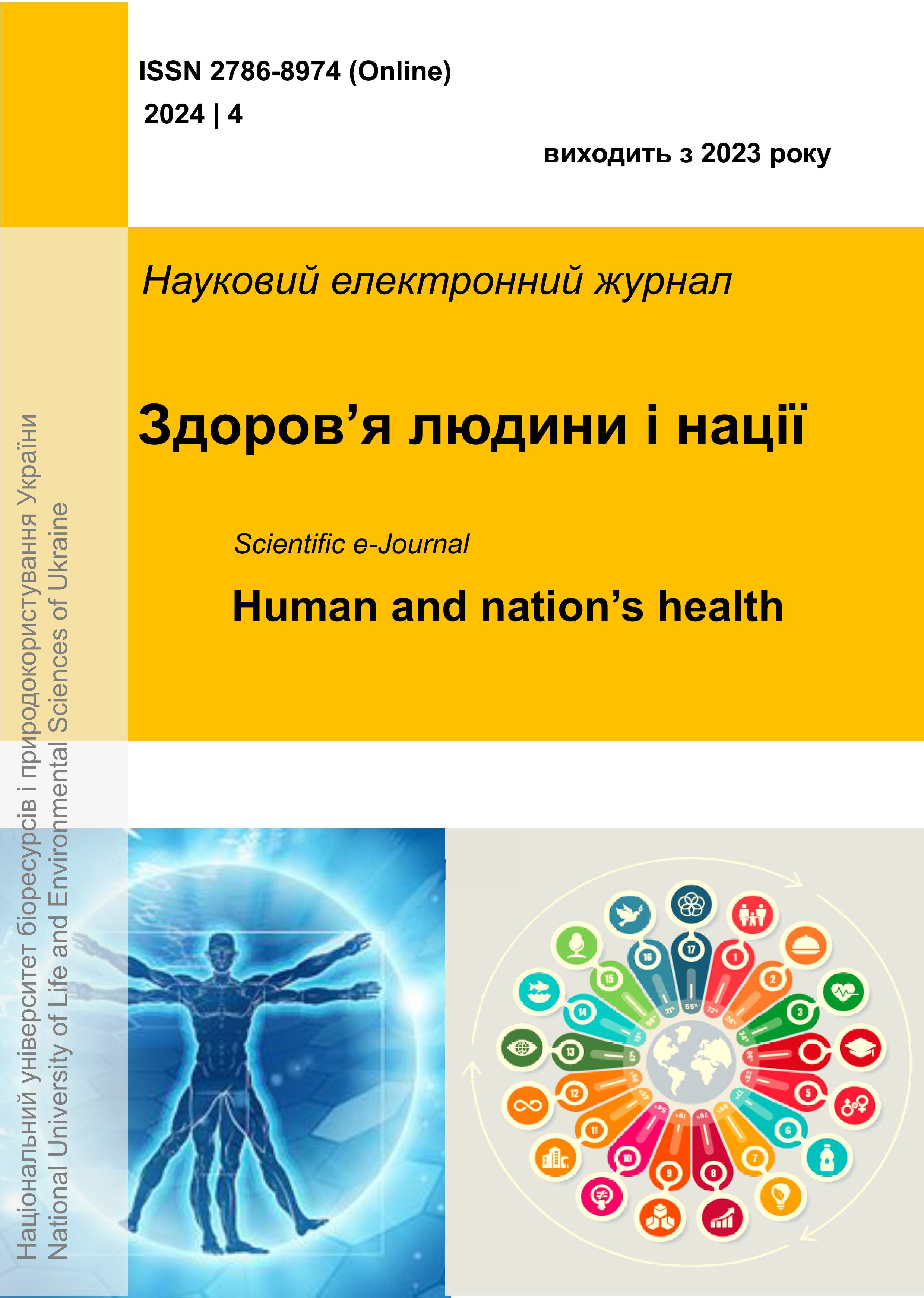THE IMPACT OF CONSUMING PROBIOTIC YOGURT «KARPATSKY» ON IMMUNE PROTECTION AGAINST SEASONAL RESPIRATORY VIRAL INFECTIONS
DOI:
https://doi.org/10.31548/humanhealth.4.2024.56Keywords:
Probiotics, yogurt, immune system, respiratory infections, seasonal viral infections, dietary supplements, immunity enhancement, healthy eating, disease preventionAbstract
This study investigates the impact of consuming “Karpatsky” yogurt on immune protection against seasonal respiratory viral infections. Given the increasing prevalence of respiratory infections and the growing interest in probiotic-based preventive measures, our research aims to explore the potential benefits of yogurt consumption on immune function.
A total of 90 participants, aged 18-65, were recruited and divided into a test group consuming “Karpatsky” yogurt daily for 12 weeks and a control group maintaining their usual diet. The evaluation of results was based on studying the number of upper respiratory tract infections, the duration of each illness episode, the number, and severity of symptoms.
During the analysis of the obtained information, a significant reduction in the frequency, duration, and severity of respiratory infection symptoms was established in the test group compared to the control group, indicating a comprehensive positive effect of the yogurt components ("Karpatsky"), including the probiotic component, on immune protection against seasonal upper respiratory tract infections.
The obtained data can be used to develop preventive measures aimed at reducing the risk of seasonal respiratory infections through the consumption of fermented probiotic products. The work carried out opens up prospects for further research related to the study of the long-term effects of consuming probiotic products on the immune system and expanding the sample size to confirm the obtained results in other population groups.
References
Центр громадського здоров’я України. (2024). Захворюваність на грип та ГРВІ в Україні. https://phc.org.ua.
Andersson, D., Balaban, N., Baquero, F., Courvalin, P., Glaser, P., Gophna, U., Kishony, R., Molin, S., Tønjum, T. (2020). Antibiotic resistance: Turning evolutionary principles into clinical reality. FEMS Microbiology Reviews, 44(2), 171-188. https://doi.org/10.1093/femsre/fuaa001
Avendaño Carvajal, L., & Perret Pérez, C. (2020). Epidemiology of respiratory infections. Pediatric Respiratory Diseases (с. 263-272). Springer International Publishing. https://doi.org/10.1007/978-3-030-26961-6_28
Cevik, M., Kuppalli, K., Kindrachuk, J., & Peiris, M. (2020). Virology, transmission, and pathogenesis of SARS-CoV-2. BMJ, 371, m3862. https://doi.org/10.1136/bmj.m3862
Hao, Q., Dong, B., & Wu, T. (2015). Probiotics for preventing acute upper respiratory tract infections. Cochrane Database of Systematic Reviews, (2), CD006895. https://doi.org/10.1002/14651858.CD006895.pub3
Sigurðardóttir, N., Nielsen, A., Munck, A., & Bjerrum, L. (2015). Appropriateness of antibiotic prescribing for upper respiratory tract infections in general practice: Comparison between Denmark and Iceland. Scandinavian Journal of Primary Health Care, 33(4), 269-274. https://doi.org/10.3109/02813432.2015.1102880
Woappi, Y., Gabani, P., Singh, A., & Singh, O. (2016). Antibiotrophs: The complexity of antibiotic-subsisting and antibiotic-resistant microorganisms. Critical Reviews in Microbiology, 42(1), 17–30. https://doi.org/10.3109/1040841X.2013.875982
World Health Organization. (2023). World health statistics 2023. https://cdn.who.int/media/docs/default-source/gho-documents/world-health-statistic-reports/2023/world-health-statistics-2023_20230519_.pdf
Zhao, Y., Dong, B. R., & Hao, Q. (2022). Probiotics for preventing acute upper respiratory tract infections. Cochrane Database of Systematic Reviews, (8), CD006895. https://doi.org/10.1002/14651858.CD006895.pub4
Foxman E. (2024). Colds: How to Prevent Them. Yale Medicine. https://www.yalemedicine.org/conditions/colds
Downloads
Published
Issue
Section
License
Copyright (c) 2024 Human and nation's health

This work is licensed under a Creative Commons Attribution-ShareAlike 4.0 International License.
All materials are distributed under the terms of the Creative Commons Attribution 4.0 International Public License, which allows others to extend the article with acknowledgment of authorship and first publication in this journal.

